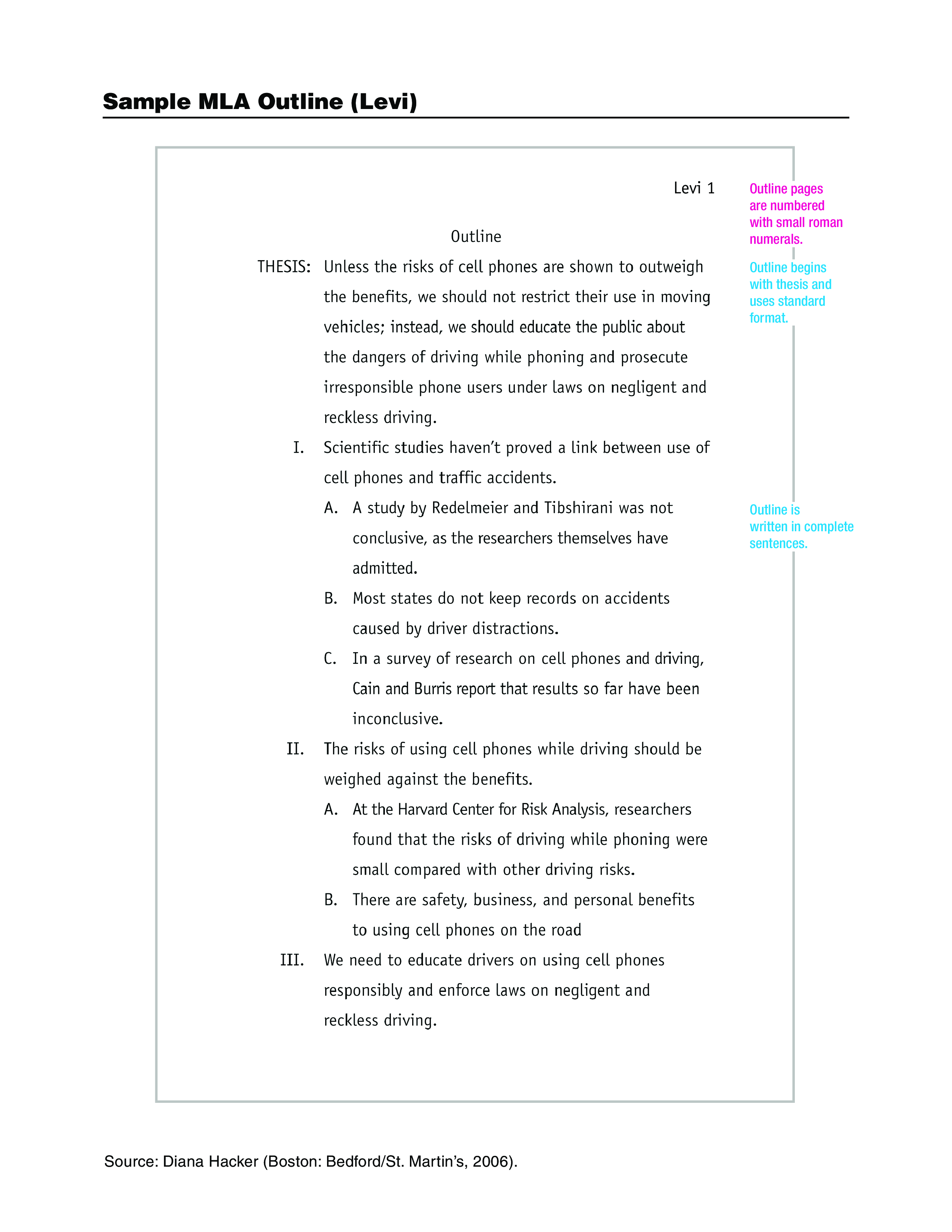MLA Outline
Save, fill-In The Blanks, Print, Done!

Download MLA Outline
Adobe Acrobat (.pdf)- This Document Has Been Certified by a Professional
- 100% customizable
- This is a digital download (779.54 kB)
- Language: English
- We recommend downloading this file onto your computer.
How do you do MLA format on Microsoft Word?
We provide this standardized MLA Outline template with text and formatting as a starting point to help professionalize the way you are working. This is a ample MLA Outline (Levi) Levi 1 Outline pages are numbered with small roman numerals..
How do you write the title of an MLA Paper?
By using Modern Language Association (MLA) standards, you are sure the reader will appreciate your work and won't be distracted by the formatting.
- MLA Paper Formatting Basics;
- Use white 8 ½ x 11” paper;
- Make 1-inch margins on the top, bottom, and sides;
- The first word in every paragraph should be indented one half inch;
- Indent set-off quotations one inch from the left margin;
- Use any type of font that is easy to read, such as Times New Roman. Make sure that italics look different from the regular typeface;
- Use 12 point size;
- Double space the entire research paper, even the works cited page;
- Leave one space after periods and other punctuation marks, unless your instructor tells you to leave two spaces;
- These guidelines come from the MLA Style Center’s web page “Formatting a Research Paper.”.
Scientists regularly need advanced templates, forms, spreadsheets, and often more than any other industry. Therefore, our website AllBusinessTemplates.com is updated every day with new suitable and up-to-date templates for your convenience. For example, this Mla Format Outline Research Paper template can save you valuable time and can help you to reach the next level of success in your studies, research work.
We provide this standardized MLA Style Format with all the information you know on how to format the document according to the Modern Language Association (MLA) style, with text and formatting as a starting point to help professionalize the way you are communicating on paper.
If time or quality is of the essence, this MLA Style tutorial and guidelines can help you to save time and to focus on the topics that really matter.
How do you do MLA format on Microsoft Word?
Academic writing requires the author to support their arguments with reference to other
published work or experimental results/findings. A reference system will perform three
essential tasks:
- Enable you to acknowledge other authors' ideas (avoid plagiarism).
- Enable a reader to quickly locate the source of the material you refer to so they can consult it if they wish.
- Indicate to the reader the scope and depth of your research.
- The Modern Language Association (MLA) style is a widely used referencing system to help
- you achieve these objectives.
How do I use the Style?
The MLA system involves two tasks:
- How you compile a list of reference sources at the end of your text (reference list).
- How you refer to other authors in the body of your text (in-text citation).
- Below is a list of some common citation types along with examples of how they are laid out within the MLA Style guidelines.
- etc...
Using this MLA document template guarantees you will save time, cost, and effort! It comes in Microsoft Office format, is ready to be tailored to your personal needs. Completing your document has never been easier!
Download this Modern Language Association (MLA) Format Outline Research Paper template that will perfectly suit your needs!
DISCLAIMER
Nothing on this site shall be considered legal advice and no attorney-client relationship is established.
Leave a Reply. If you have any questions or remarks, feel free to post them below.
Latest templates
Latest topics
- Google Docs Templates
How to create documents in Google Docs? We provide Google Docs compatible template and these are the reasons why it's useful to work with Google Docs... - IT Security Standards Kit
What are IT Security Standards? Check out our collection of this newly updated IT Security Kit Standard templates, including policies, controls, processes, checklists, procedures and other documents. - Letter Format
How to format a letter? Here is a brief overview of common letter formats and templates in USA and UK and get inspirited immediately! - Google Sheets Templates
How to work with Google Sheets templates? Where to download useful Google Sheets templates? Check out our samples here. - Influencer Marketing Templates
What makes a good influencer? Check out our effective and useful Influencer Marketing Templates here!
cheese

